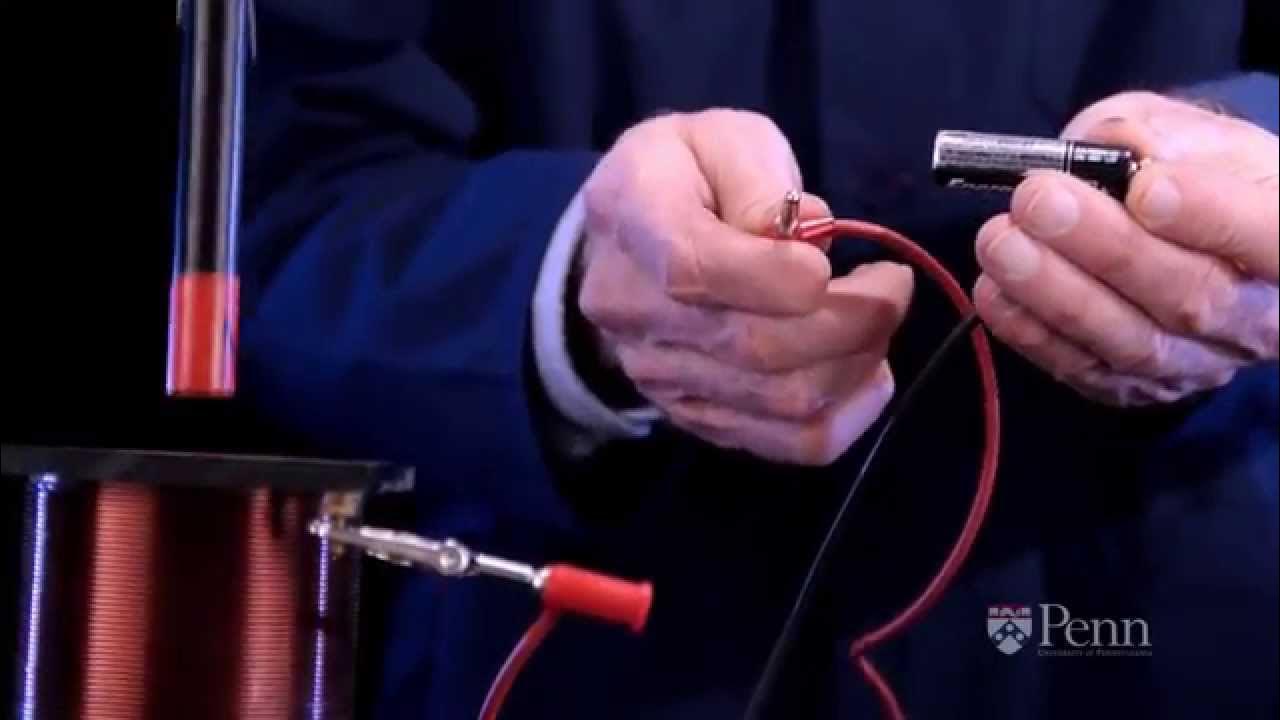Cara Kerja Generator Listrik
Summary
TLDRThis video explains how electricity is generated using a generator, highlighting the interaction between magnets and coils based on Faraday's law of electromagnetic induction. It details the roles of the stator and rotor, emphasizing how rotating magnets create an electric current. The video also discusses methods to enhance power generation without increasing the generator's size, such as using coils instead of permanent magnets and employing an excitation system. The process is illustrated with a focus on understanding AC and DC currents, providing insights into the workings of both traditional and advanced generators.
Takeaways
- ⚡ A generator is a device used to generate electrical energy through electromagnetic principles.
- 🌀 The operation of a generator is based on Faraday's law, which explains how a magnetic field interacts with coils to produce electrical current.
- 🔄 A generator consists of two main components: the stator (stationary part) and the rotor (rotating part).
- 🔋 The stator is typically made of copper coils, while the rotor contains magnets that create a magnetic field.
- 🔄 The movement of magnets near the copper coils generates an electric current.
- 🛠️ To increase the electrical output, additional magnets and coils can be added, although this increases the generator's size and weight.
- 🧲 Instead of permanent magnets, the rotor can also use coils powered by direct current (DC) to create a magnetic field.
- 🔄 In large-scale generators, the stator has multiple coils, and the rotor requires a DC supply to generate the magnetic field.
- ⚙️ There are two types of excitation systems: external (powered by an external source) and generated (using permanent magnet generators).
- 🔌 Diodes are used to rectify the generated AC current into DC, enabling the creation of a stronger magnetic field in the rotor.
Q & A
What is the main function of a generator?
-The main function of a generator is to convert mechanical energy into electrical energy.
What principle underlies the operation of generators?
-Generators operate based on electromagnetic induction, primarily described by Faraday's law, which states that a changing magnetic field near a conductor induces an electric current.
What are the two main components of a generator?
-The two main components of a generator are the stator and the rotor.
What role does the stator play in a generator?
-The stator is a static component that typically consists of copper windings where the magnetic field interacts to induce electric current.
How does the rotor contribute to electricity generation?
-The rotor is the rotating component of the generator that contains magnets or coils, creating a magnetic field that interacts with the stator to generate electricity.
What is the significance of the excitation system in a generator?
-The excitation system provides the necessary DC current to the rotor to create the magnetic field required for induction, which is crucial for the generator's operation.
What are the two types of excitation systems mentioned?
-The two types of excitation systems are external excitation, which uses a battery or external power source, and self-excitation, which generates its own power using a permanent magnet generator (PMG).
What is the function of a rectifier in a generator system?
-A rectifier converts the AC output generated by the PMG into DC, which is then supplied to the rotor to create the necessary magnetic field.
How does increasing the number of magnets and stator coils affect a generator?
-Increasing the number of magnets and stator coils can enhance the electrical output, but it also increases the size and weight of the generator, potentially reducing its efficiency.
What types of energy sources can drive the rotor in a generator?
-The rotor can be driven by various energy sources, such as wind turbines, engines, or any mechanism that produces rotational energy.
Outlines

Esta sección está disponible solo para usuarios con suscripción. Por favor, mejora tu plan para acceder a esta parte.
Mejorar ahoraMindmap

Esta sección está disponible solo para usuarios con suscripción. Por favor, mejora tu plan para acceder a esta parte.
Mejorar ahoraKeywords

Esta sección está disponible solo para usuarios con suscripción. Por favor, mejora tu plan para acceder a esta parte.
Mejorar ahoraHighlights

Esta sección está disponible solo para usuarios con suscripción. Por favor, mejora tu plan para acceder a esta parte.
Mejorar ahoraTranscripts

Esta sección está disponible solo para usuarios con suscripción. Por favor, mejora tu plan para acceder a esta parte.
Mejorar ahoraVer Más Videos Relacionados

Faraday's Law of Induction Demonstration - Penn Physics

Simulasi Magnet dan Induksi Elektromagnetik Menggunakan PHET

Kurikulum Merdeka Rangkuman IPA Kelas 9 Bab 4 Magnet

GAYA GERAK LISTRIK | KELAS XII | FISIKA ITU MUDAH [Nabila Ratna Az-Zahra]

Fungsi dan Cara Kerja Trafo

Video Praktikum Fisika Dasar - Percobaan Faraday
5.0 / 5 (0 votes)
